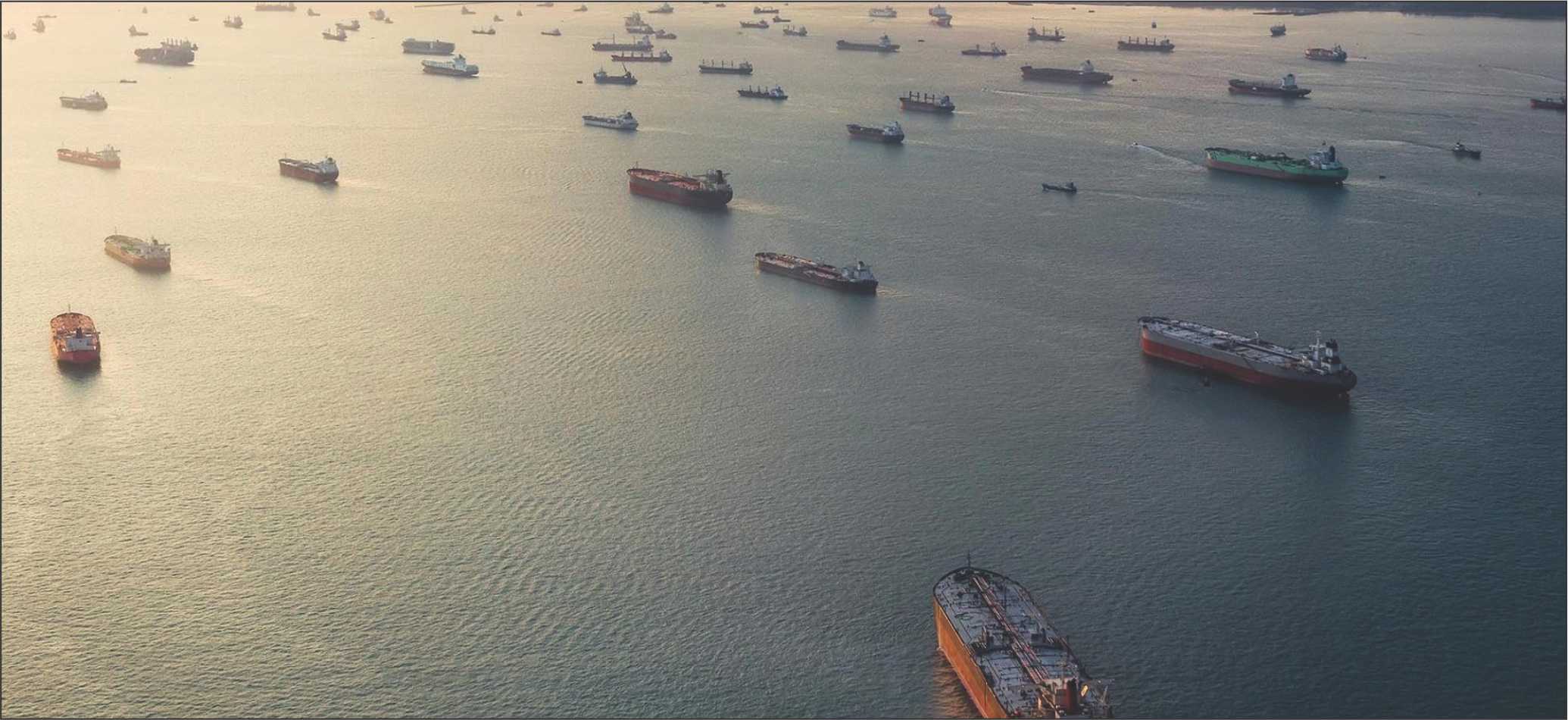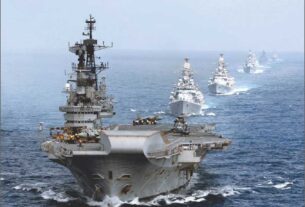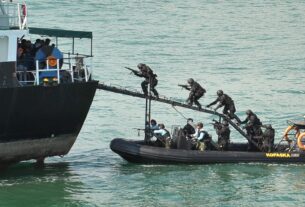Increasing piracy activities in SE Asia
South East Asia is fast becoming a potential threat to the world commerce due to rising incidents of sea piracy. In past few years the region has witnessed an increase in the pirate attacks near Strait of Malacca and South China Sea.
This is becoming a significant problem and it seems to be escalating as the value of the oil stolen in 2015 alone in the area stands at $5 million. There have been 124 armed robberies, hijackings and other attacks on ships by Southeast Asia sea criminals in 2015.
In Southeast Asia, pirates are increasingly hijacking ships to steal oil from slow-moving tankers but rarely seek to ransom the crew. It is estimated that pirates have stolen more than 16,000 metric tons of oil products in 2015.
The pirates operate very differently in this region as compared to the piracy attacks in Somalia or East Africa. Unlike pirates in Somalia, who seeks multi million dollars as ransom money and keep the ship and crew as hostage, pirates in Malacca Strait capture tankers, sail them to a mother ship and siphon off the fuel, then release the boats with their equipment smashed and, at times, the crews badly hurt. In the Malacca Strait, pirates like to get in and get out. Their modus operandi is not to kidnap. These pirates just want the cash aboard the vessel or to rob the crew of any valuables.
There’s a really high return on investment in a very short period of time with oil theft in the region.Pirates can make millions of dollars quite quickly by siphoning up oil-as opposed to Somali piracy, where they sometimes had to sit on a vessel for a year or more in order to get multimillion-dollar ransoms.
The surge in Southeast Asian piracy is a worrying trend. The scale and sheer number of ships passing through the Strait of Malacca and Singapore makes it worthwhile for the pirates to do their business. The majority of attacks that take place in Southeast Asia happen in ports and docks. These attacks mainly do not count as acts of piracy though. The nature of piracy in Asia, compared to Somali piracy, is less violent. Seeking plunder such as oil, the pirate networks are much more sophisticated and the use of violence is in most cases a matter of an accident than an action planned in advance.
Choke points
There are many significant reasons for the rising incidents of piracy on Southeast Asian seas, particularly the Strait of Malacca and Singapore, as they are home to key shipping routes. Nearly half the world’s oil, and much of the energy products imported by China and Japan, go through those waterways. Between 70% and 80% of all the oil imported by China and Japan transits the Strait.
Sea crimes in any of the “choke points”-places like the Horn of Africa and the Strait of Malacca can appeal to pirates because they are relatively narrow must-use routes for shippers.
Undoubtedly, the geography of SE Asia largely explains why piracy and armed robbery at sea is so prevalent in the region. Stretching from the westernmost corner of Malaysia to the tip of Indonesia’s Bintan Island, the narrow, 800km long Strait of Malacca and Singapore connect the Pacific Ocean to the east with the Indian Ocean to the west.
The Strait serve as a global shipping superhighway: each year more than 120,000 ships, including bulk carriers, container vessels, ferries, tankers, very large crude carriers (VLCC), barges under tow and fishing vessels, funnel slowly through these congested waters. The cargo they carry accounts for a third of the world’s marine commerce. An enormous number of islands are available for the pirate’s use as hiding places and bases from which to sortie and the distance from these island bases to the place of the crime is never long.
The channel is simply too crowded and too shallow. Gigantic vessels are instead forced to churn through at slow speeds that invite pirates in fast-moving skiffs.
Further, the emergence of Indonesia and Malaysia as world class producers and exporters of palm oil has changed the piracy business.
Organized crime
It is a well-known fact by now that piracy is a big industry which works in a very organized manner. A typical pirate network consists of crew members, their leader, as well as a middleman who has all the necessary contacts. It also has experts who can forge documents with which the stolen goods can be resold; a “phantom ship” on which the goods can be transported; a buyer who is looking for potential end users; an investor who finances the company; and one or more spies who provide information to the network. These spies or “insiders” could be port employees, customs officers or crew members.
The complexity of a successful attack assumes that piracy is organized through broad networks providing high intelligence and expertise to successfully conduct such difficult tasks as stealing a tanker and siphoning off its liquid cargo. In such a network, pirates are but the last part of the chain. This kind of criminal activity cannot be organized without large quantities of capital, provided by an “investor”. Before the theft can be commenced, lots of insider information has to be gathered. To steal oil, pirates need information about the tanker and its contents, about its route and crew numbers.
Due to the complex location of Malacca Strait, the choke point between Malaysia and Indonesia, pirates use the inability of security forces to enter territorial waters of a neighboring state to chase them down.
Piracy in Southeast Asia could be costly for transportation companies as well as in terms of higher insurance premiums. Increasing piracy attacks could rise the premiums up to 17-20%. Such an increase would be felt worldwide.
Even minor disturbances may affect prices worldwide. If attacks continue and will continue to be reported, insurance companies may decide to rise insurance premiums, which would rise the costs of maritime trade. Piracy should not be ignored, even though its scale is not life-threatening, but if the gangs are successful and the business is as yielding as it is now, it may attract more opportunists and evolve into a huge issue.
Southeast Asian piracy is on the rise. It has a different nature than Somali piracy, but its potential to disrupt maritime trade should be accounted for. Latest attacks have revealed economically dangerous siphoning of liquid fuels, especially gas and oil, which cause serious harm to transportation companies. Such attacks are conducted by sophisticated networks of organized criminals, who do not lack experts and extensive intelligence, as well as funding. Stolen goods are almost untraceable due its nature and do to relatively easy forgery of documents.
Regional cooperation
Somali piracy has been successfully curbed to levels, where it no longer poses threat to maritime trade. Some practices used to achieve such results can be used in Southeast Asia.
However the differences between the regional countries is making it difficult to curb such attacks.
There are regional initiatives as ReCAAP (Regional Cooperation Agreement on Combating Piracy and Armed Robbery against Ships in Asia), ICC International Maritime Bureau (IMB) or “Eyes in the Sky”.
ReCAAP is a government-to-government agreement aimed at promoting cooperation in fighting piracy and armed robbery in Asia among 20 states that are its members. Its role is especially in information-sharing and patrol cooperation.
The IMB is a non-profit body, which functions as a crime and malpractice investigation organization. IMB runs a website devoted to providing news and recommendations against piracy.
“Eyes in the Sky” is a joint patrol of Malaysia, Indonesia and Thailand. Officially these bodies should work together to combat against piracy, but the reality is somewhat different.
One of the prevailing issues is distrust between the countries of near the Strait of Malacca. Malaysia does not want to see ReCAAP become a rival of the Kuala Lumpur-based IMB, and Indonesia wanted to host ReCAAP in Jakarta but lost the bid to Singapore. Malaysia and Indonesia have not joined ReCAAP, possibly because of they fear of exposing blind spots in their intelligence-gathering.
Also small issues too affect the cooperation. For example the “Eyes in the Sky” Initiative places patrols only during daytime, while the attacks take place at night in most of the cases.
SE Asian countries need to better understand the complexity of piracy attacks and increase the cooperation to curb the menace.
In case of Somalia, increasing cooperation and military presence helped to curb piracy to almost zero levels. Arming vessels with private guards and increasing security measures as cameras and barbed wire in combination with safe-route navigation, limited opportunities for pirates. The Somali pirates were eventually deterred by the combined efforts of governments, international organizations and shipowners. Governments and international institutions deployed naval forces and coastal patrols, while shippers equipped their vessels with barbed wire, water cannons and armed guards, also rerouting ships and increasing their speed to make them harder to board.
Moreover, addressing the causes that encourage pirates to take up this profession, should provide long-term solution. Poverty and loss of job, especially among fishermen, bring pirate networks most recruits. These issues are extremely difficult to address, but in order to get rid of the problematic trend, larger social issues need to be tackled in the first place.
Increased cooperation within the existing counter piracy frameworks could help in dealing with technical issues such as overlapping jurisdictions in territorial waters, especially when chasing down pirates and investigating the attacks. If the political will within the member countries of ReCAAP exists, it could serve as an effective platform for joint counter-piracy exercises.
Also multilateral organizations could be involved and made aware of the seriousness of the issue on a regular basis for getting extra funding and support to fight the piracy. As the example of Somali piracy has shown, undisrupted trade routes are within the interest of all parties and bring results. Somali piracy is almost nonexistent and has brought missions of NATO and EU together to curb it down. American Pivot to Asia strategy and forums as ASEAN organization are bodies that can be used to foster more attention and involvement of other actors dependent on maritime trade.
The surge in hijackings during the past few years has exposed the weaknesses in the way piracy is policed in the littoral countries. In particular, Malaysia, Singapore and Indonesia have yet to resolve the ‘hot pursuit’ issue preventing navy boats from pursuing pirates who flee into neighbours’ waters, nor have they resolved how best to share information about the piracy networks between countries and between marine and land based law enforcement agencies.
The regional countries need to understand that all maritime piracy begins and ends on land. Therefore effective antipiracy measures need more than maritime security measures; they also need close coordination with national law enforcement authorities and anti-corruption agencies.
Though experts believe that Asia’s dense map of territorial waters makes it difficult for military vessels to operate easily in the international waters. Therefore to fight the piracy in SE Asia a combination of tactics including vessel-protection measures, region-specific training for ship crews, and information sharing mechanism is required.
Multilateral cooperation, security improvements, best management and awareness practices and supporting good governance are principles that need to be adopted to stop the dangerous trend of rising piracy in this region.




